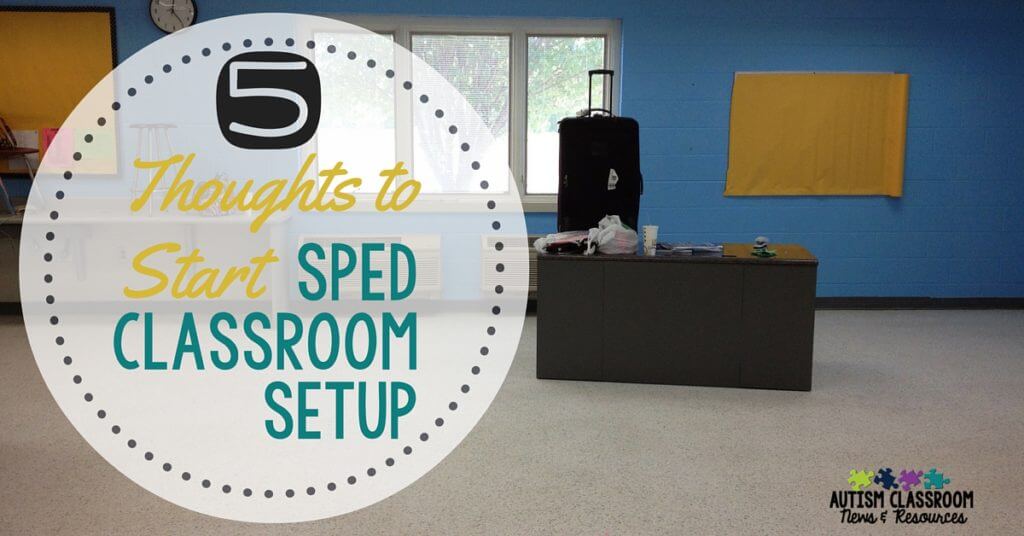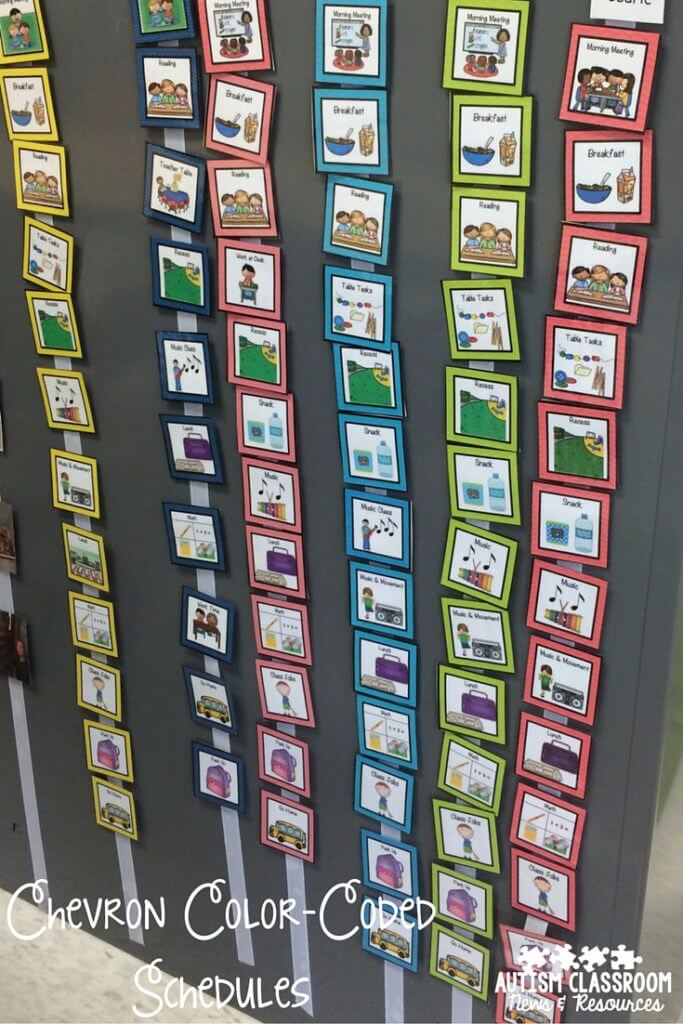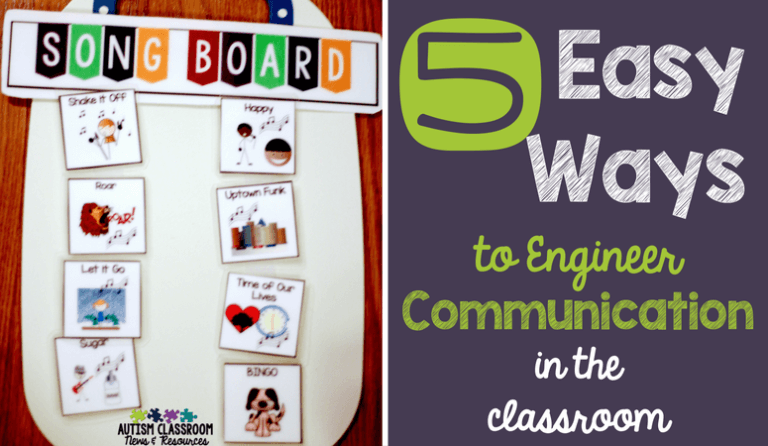Setting up an autism classroom can be tough. You don’t always know which students you are getting. Will last year’s setup will work. It’s a new room, and you don’t know what furniture you have. And sometimes you end up setting it up and making changes for the first month of school.
If those descriptions fit your situation, this series of posts in the 10 Steps to a Well-Run Special Education Classroom is for you. And you might also want to check out the Special Educator Academy where we have a whole course just on setting up an autism classroom from the schedule to the staffing.

I’m kicking this series off with some of the things we don’t always say about what makes setting up a special education classroom different than other types of rooms. And I’ve indexed all the posts in this series so you can access them easily.
1. Planned Around the Students from the Start
General education teachers certainly individualize and differentiate in their classrooms to meet the needs of individual students as they get to know them. In special education, everyone expects us to hit the ground running in meeting the individual needs of our students, because that’s our jobs. IEPs are expected to be followed throughout the year from the first day of school on….there’s no, “when we get settled in we’ll start running that behavior plan.”
So, before we even start to think about what setting up an autism classroom will look like or our day will look like, what strategies we want to try this year, or how we want to arrange the furniture, we have to think about the needs of the students we will have. So, that has to be to step number 1. I typically do that with my Teaching Plan and I’ll walk you through how I do that in the next post.
2. To Theme or Not to Theme When Setting Up an Autism Classroom
This one is a bit more complex and I realize it’s a touchy issue for many. I know that when it comes to setting up an autism classroom, decor (Ugh I hate that phrase for some reason) is a big deal to many teachers. And it’s important to have a classroom in which the teacher is comfortable as well as the students. Everyone should like to be in the classroom, so it should be bright, engaging and interesting.
However, I find all the time, money and effort spent on “decor” in setting up an autism classroom sometimes gets in the way of the meat of the teaching. I also find that the decor items (e.g., pom poms hanging from the ceiling) are sometimes distracting to SOME students. Now, this isn’t true for every classroom or every student.
I find that once I put up the visuals needed by the students, the reminders needed for the staff, stash some PECS books and data sheet clipboards on the walls, then post lesson plans, schedules, and zoning plans. I don’t have a lot of room left for decoration.
This is actually what prompted me to develop my thematic visual bundles so the walls are brightly colored and you can have chevron or polka dots but still have it be functional for the students. So, I call my theme “The visual cueing theme.”
3. The Need for Specialized Furniture in Setting up an Autism Classroom
Knowing what furniture you have to work with is another important component that will come into play as we start setting up an autism classroom.
- How many tables, desks and chairs do you have?
- Do you have enough chairs for each student–believe it or not I’ve been in classes that don’t.
- Also crucial is knowing how many shelves and dividers you have to block off space within the classroom.
Whether you have younger or older students, most students in a more self-contained classroom or resource classroom are going to benefit from clear boundaries in the room. However, I’ve found that most classroom furniture and materials were ordered for by people who thought all classrooms were equal. So you are likely to walk into a classroom scheduled to have 12 students and 3 adults and find 30 desks and chairs ready to be set up for a general education classroom.
In addition, if you have built in shelves around the room, you are likely to not have much furniture to divide the center of the room into spaces. This is something you want to start advocating for–more dividers and shelves that provide clear visual and physical boundaries to the students in specific learning areas.
4. The Need for Specialized Curriculum
For those of you who are newer teachers or new to different grade levels, don’t let anyone tell you that just because you teach special education you don’t need a curriculum. In fact, you need more than one curriculum.
General education teachers are given a textbook and curriculum they are expected to start with. Often special education gets left out of the discussion of the types of curriculum that is needed.
Hopefully the special education administrators will have thought of this, but it’s possible they are waiting for you to tell them what you need. I’ve been in situations where half way through the year, the special education administrators are waiting for the teacher to tell them what she needs in her class. The special education teacher is waiting for the administrators to give her materials. Meanwhile there is almost nothing for the kids to do.
So, be proactive. Look at what curriculum is available in your classroom. As you get to know the students, think about what curriculum you are going to need. Read more about what I mean by curriculum and options for many of our students. Check out this post for what it is. Look at this one for a review of the Unique, this one for the STAR and this one for a discussion of functional curricula. And of course there are always reading and math curricula you will need as well as individual curriculum needs.
As you learn about your students try to find out what curricula they have been using and where they left off so you don’t skip ahead or re-cover too much ground.
5. Managing Adults
In this day and age, most general education teachers don’t have paraprofessionals in setting up an autism classroom unless there are special education students the aide is supporting. Consequently the special educator’s job will require more training and managing of adults than the general educator’s job does. So, what are the best ways to do that? We’ll be talking about that in this series too when we talk about zoning, training staff and working with adults.
10 Steps to a Well-Run Special Ed. Classroom
So those are 5 things to think about when setting up an autism classroom. Here’s the line up of 10 Steps to a Well-Run Special Ed. Classroom. So dive on in.
- Getting to Know Your Students–Using Teaching Intervention Plans
- Setting up the Classroom Schedule with a Focus on Planning Center Rotations
- Designing the Classroom Space
- Organizing and Managing Classroom Staff (Zoning Plans and Establishing Teams)
- What Visuals Do You Need to Start?
- Organizing Classroom Materials
- Choosing and Using Communication Tools
- Organizing Data Systems in the Class
- Lesson Planning in the Autism Classroom
- Considerations for Inclusion and General Education Participation
Looking for More Help in Setting Up an Autism Classroom?

Come join us in the Special Educator Academy where we have a whole course that can get you organized and ready to go for the year!







